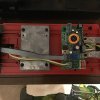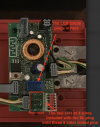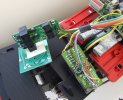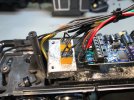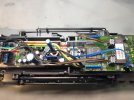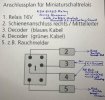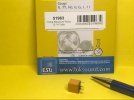I am in the process of putting an XL in my 23851 Mallet.
I am confused (for me easily) by the Massoth instruction booklet for connection to the LGB Decoder interface. I attach a picture of the interface in case it is different to what I think it is!
I have 2 LGB 55026 interface cables and the two cables included with the XL.
The engine previously had two LGB chips, now removed, one was faulty.
Please will someone give me simple instructions as to what connections are needed to be made from the interface to the XL board.
I am confused (for me easily) by the Massoth instruction booklet for connection to the LGB Decoder interface. I attach a picture of the interface in case it is different to what I think it is!
I have 2 LGB 55026 interface cables and the two cables included with the XL.
The engine previously had two LGB chips, now removed, one was faulty.
Please will someone give me simple instructions as to what connections are needed to be made from the interface to the XL board.


